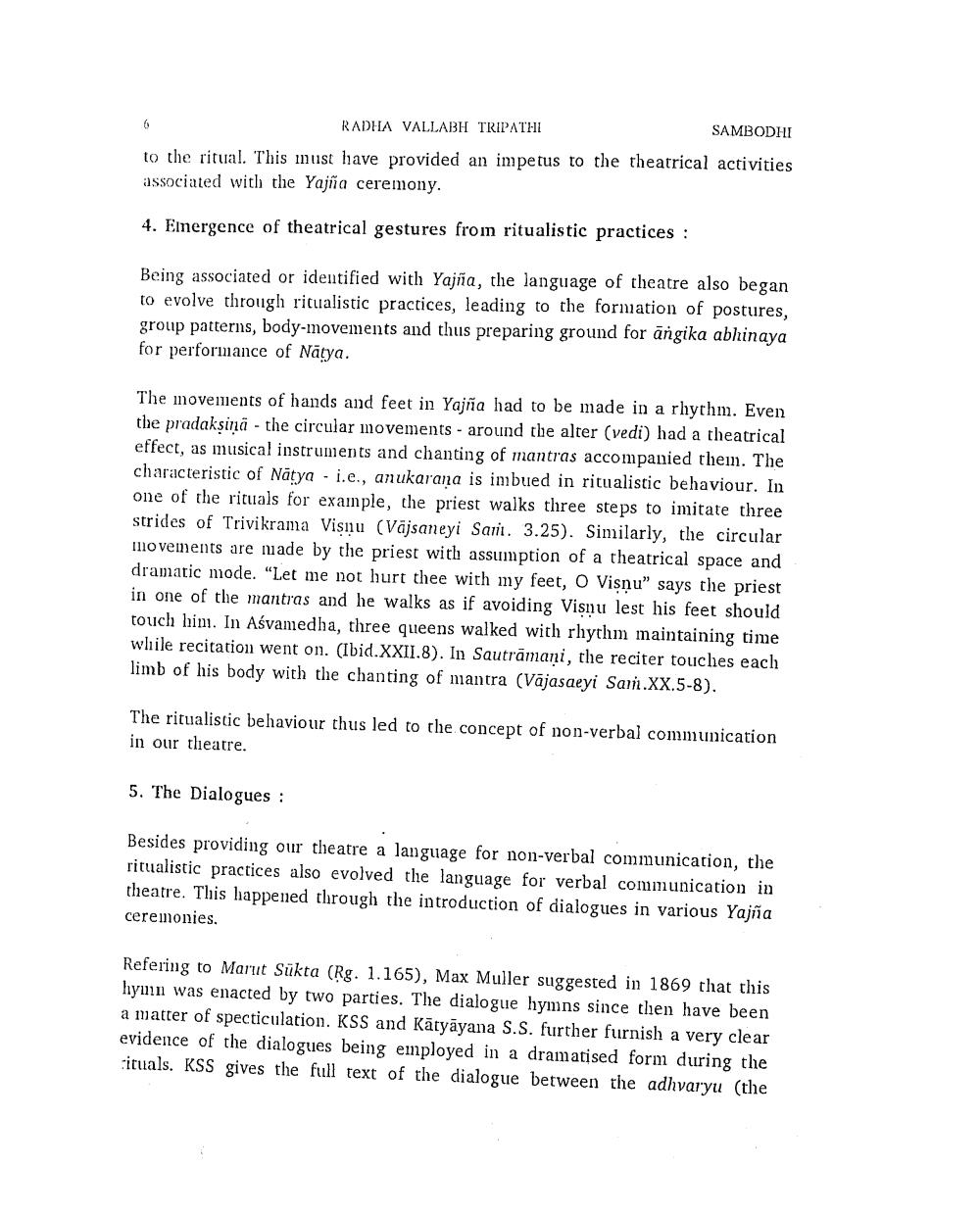________________
RADHA VALLABH TRIPATHI
SAMBODHI
to the ritual. This inust have provided an impetus to the theatrical activities associated with the Yajña ceremony.
4. Emergence of theatrical gestures from ritualistic practices :
Being associated or identified with Yajña, the language of theatre also began to evolve through ritualistic practices, leading to the formation of postures, group patterns, body-movements and thus preparing ground for angika abhinaya for performance of Natya.
The movements of hands and feet in Yajña had to be made in a rhythm. Even the pradaksinä - the circular movements - around the alter (vedi) had a theatrical effect, as musical instruments and chanting of mantras accompanied them. The characteristic of Nātya - i.e., anukarana is imbued in ritualistic behaviour. In one of the rituals for example, the priest walks three steps to imitate three strides of Trivikrama Visiu (Vājsaneyi San. 3.25). Similarly, the circular movements are made by the priest with assumption of a theatrical space and dramatic mode. “Let me not hurt thee with my feet, O Visnu” says the priest in one of the mantras and he walks as if avoiding Visnu lest his feet should touch him. In Aśvamedha, three queens walked with rhythm maintaining time while recitation went on. (Ibid.XXII.8). In Sautrāmani, the reciter touches each limb of his body with the chanting of mantra (Vājasaeyi Sam.XX.5-8).
The ritualistic behaviour thus led to the concept of non-verbal communication in our theatre.
5. The Dialogues :
Besides providing our theatre a language for non-verbal communication, the ritualistic practices also evolved the language for verbal communication in theatre. This happened through the introduction of dialogues in various Yajña ceremonies.
Refering to Marut Sukta (Rg. 1.165), Max Muller suggested in 1869 that this hyun was enacted by two parties. The dialogue hymns since then have been a matter of specticulation. KSS and Kāryāyana S.S. further furnish a very clear evidence of the dialogues being employed in a dramatised form during the rituals. KSS gives the full text of the dialogue between the adhvaryu (the




